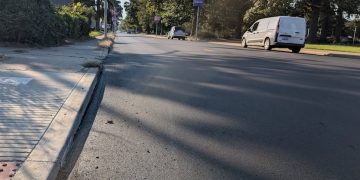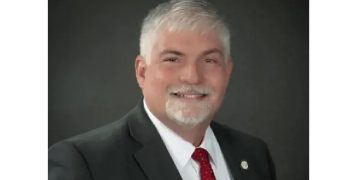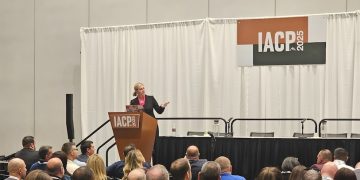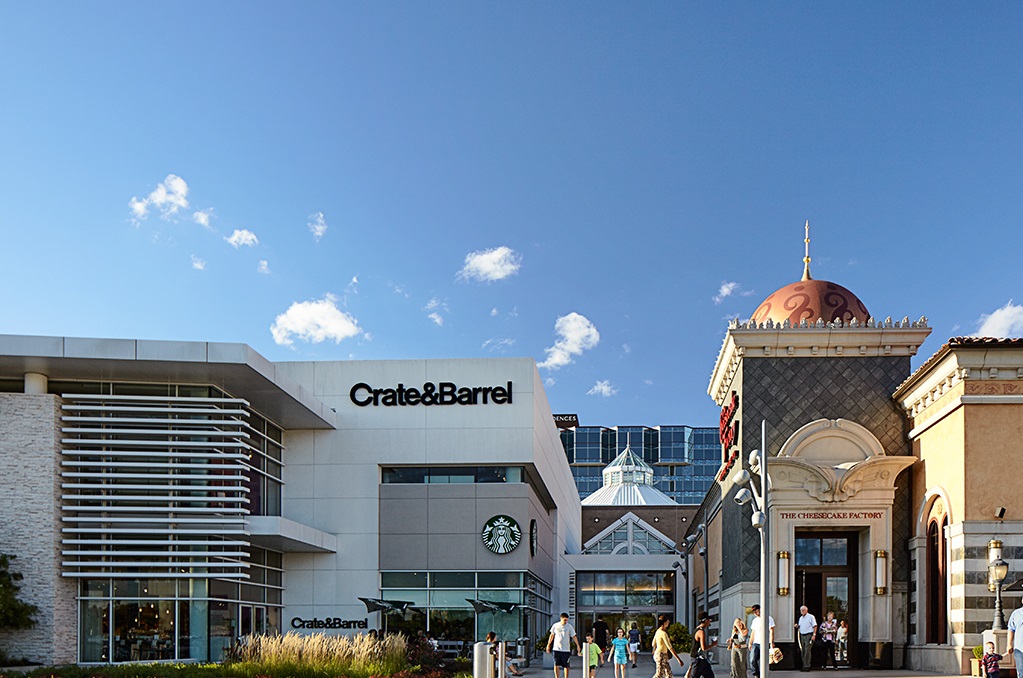A requested rezone for 87 acres of land at the southern tip of Bloomington, next to I-69, was rejected by Bloomington’s city council at its meeting last Wednesday.
The requested rezone by owner Bill Brown—from PUD (planned unit development) to MC (mixed-use corridor)—was based on the idea that it would improve the marketability of the land, which has sat undeveloped under its current zoning for more than three decades.
The vote on the nine-member council was 1–7. Ron Smith’s was the sole vote of support. Steve Volan abstained when the roll was called.
The city planning staff’s recommendation against the rezone request relied on the comprehensive plan, which calls for the area to be developed as an employment center. So the planning staff recommendation is for a rezone from PUD, but to ME (mixed-use employment), not the MC district that Brown wanted.
The planning staff recommendation, for a rezone from PUD to ME, is incorporated into the proposal for the citywide zone map and UDO revision process. The mapping part of the proposal is currently expected to be heard by the plan commission on March 29.
The use restrictions for the current PUD are essentially ME uses, Brown contends, which has not resulted in development in three decades. So he wants the increased flexibility that comes with MC zoning.
One more flexible aspect of MC zoning , compared to an ME district, is the ability to to build a full-sized restaurant. A sit-down restaurant is what one potential developer has indicated would be crucial to a possible development, according to Brown’s attorney, Michael Carmin.
A restaurant would be allowed under the staff-recommended ME zoning. But Carmin pointed to the asterisk next to the “P” under restaurants as a permitted use for ME. The asterisk means that any restaurant would be limited to less than 2,500 square feet.
At Wednesday’s meeting of the full council, Carmin presented a slide with the breakdown of square footage for some familiar area restaurants. What does 2,500 square feet get you in a restaurant? Based on Carmin’s table, it gets you a Jiffy Treat, White Castle or a Dairy Queen.
Table: Square footages of restaurants (Michael Carmin for Bill Brown)
| Restaurant | Square Footage |
| Cheddar’s | 8,602 |
| Texas Roadhouse | 7,982 |
| O’Charley’s | 6,608 |
| Mother Bear’s | 6,266 |
| Red Lobster | 5,675 |
| Chick-fil-A | 5,185 |
| Joella’s Hot Chicken | 4,062 |
| Hardee’s | 3,512 |
| Pizza Hut (west side) | 3,062 |
| White Castle | 1,908 |
| Jiffy Treet (Ellettsville) | 1,391 |
| Dairy Queen | 860 |
Brown doesn’t have a specific development proposal for the property. But according to Carmin, Brown has been approached for possible development of a hotel in the southwest corner of the property, next to I-69. Brown has also been approached to develop a large part of the property as a training center for fire and emergency services.
Also a part of the mix for Brown and Carmin is the low probability they see that a large employer might develop the entire parcel as a 200-employee corporate headquarters, which would be consistent with an ME (mixed-use employment) zoning district. Instead, it would only be smaller operations—with 5, 10, 15 or maybe 30 employees—who might be interested in developing some smaller part of the 87-acres.
That’s a scenario that would require subdividing the parcel, which would trigger a requirement to build a north-south connector road, bisecting the property.
At the land use committee meeting, Carmin said, “The cost estimate I have from a local engineer for the cost of that road is $2.6 million.” He added, “You cannot put in a $2.6-million road by having one user come in who’s willing to build a site of 10 to 15,000 square feet, employ 20 people—they will not pay enough for the lot.”
The outcome of the full council’s vote on Wednesday was not a surprise, given that the four-member land use committee’s vote the previous week was 0–3 to recommend approval. Volan also abstained on the committee’s vote.
During the land use committee’s deliberations, Volan said he wanted to hear an opinion from the city’s director of economic and sustainable development, Alex Crowley.
Crowley attended Wednesday’s meeting of the full council and was invited to comment on the proposal. Crowley said, “I would say from a general economic development perspective, our community has to do everything it possibly can to set ourselves up to diversify our employment base gradually and increasingly, away from our dependence on tourism.”
Crowley said he supported the conclusion of the planning staff in favor of ME (mixed-use employment) zoning. He said, “We do have to look very carefully at somewhat limited land opportunities that exist right now, and probably, for the next decade, and think about: What is it that we can do as a city to try to maximize the potential for the outcome of those to really drive to that non-tourism, employment base?”
Crowley pointed to the increased connectivity that I-69 provides between Bloomington and Naval Surface Warfare Center Crane, as providing some potential for ME (mixed-use employment) development.
Crowley allowed that the MC (mixed-used corridor) designation would accelerate development of the 87-acre parcel. But Crowley worried that “development for its own sake is different than development that we absolutely would want to see.”
Crowley’s counsel was to give the construction of I-69 time to play out a little to “see if we can make this parcel work as hard as possible for Bloomington.”
During the December plan commission meeting on the rezone request, Clark Greiner, who is business development director for the Bloomington Economic Development Corporation, weighed in for increased flexibility of land uses on the 87-acre site. “We support zoning flexibility,” he said, adding that the zoning flexibility should “work for the property that enables the development to benefit the community.”
No representative from the BEDC was present at the land use committee meeting or Wednesday’s council meeting to comment on the request.
In voting against the requested rezone, councilmembers mostly cited the city’s comprehensive plan and their inclination to support the planning staff’s recommendation.
Brown’s attorney, Michael Carmin, cautioned that the zoning supported by the city council made the parcel practically impossible to develop. Carmin characterized the city council’s position this way: “And so you’re saying: Land bank it.” He continued, “And that’s not fair. It’s not right.”
Carmin added a legal dimension: “And frankly, I think it’s illegal—it’s called a taking when you regulate in a manner intentionally to prevent it from being used. That’s a taking. And that’s wrong, too.”
Carmin said the requested MC zone would be appropriate for the parcel, saying an MC zoning district would not be in conflict with the comprehensive plan.
In his remarks explaining why he would not be supporting the rezone request, councilmember Matt Flaherty responded to Carmin’s mention of an illegal taking. Flaherty pointed to remarks from Crowley and city zoning planner Eric Greulich to the effect that the city is legally allowed to zone certain areas inside the city, to encourage the type of development and land use that the city would like to see. “I really don’t think that’s a taking of any kind,” Flaherty said.
Flaherty also commented on the required construction of the $2.6-million road upon subdivision of the land. Flaherty said that it’s true the city could make an investment in a road, on the speculation that the parcel would see development and increase the tax base. But at the same time, a private developer like Brown could put in a road, based on the same speculation that the parcel would see development and that he would make money, Flaherty said.
In casting the sole vote of support for the rezone request, Ron Smith said, “I’m pretty persuaded that this is a good idea.”
Smith did not see much momentum for development under the ME zoning given that it had not seen development in 30 years with something similar to ME zoning. “It doesn’t seem like there’s any bites in the water,” Smith said. Smith added, “I think Mr. Brown and Mr. Carmin will keep an eye on it for Bloomington. And, and there will be some jobs created there.”





















































































